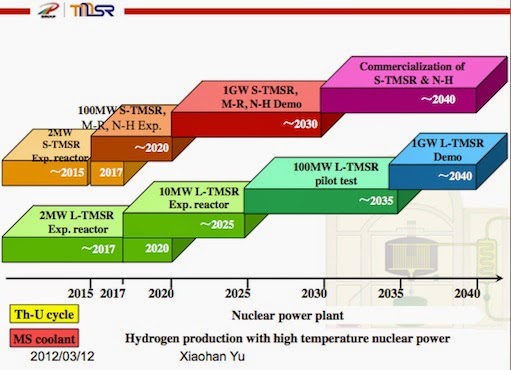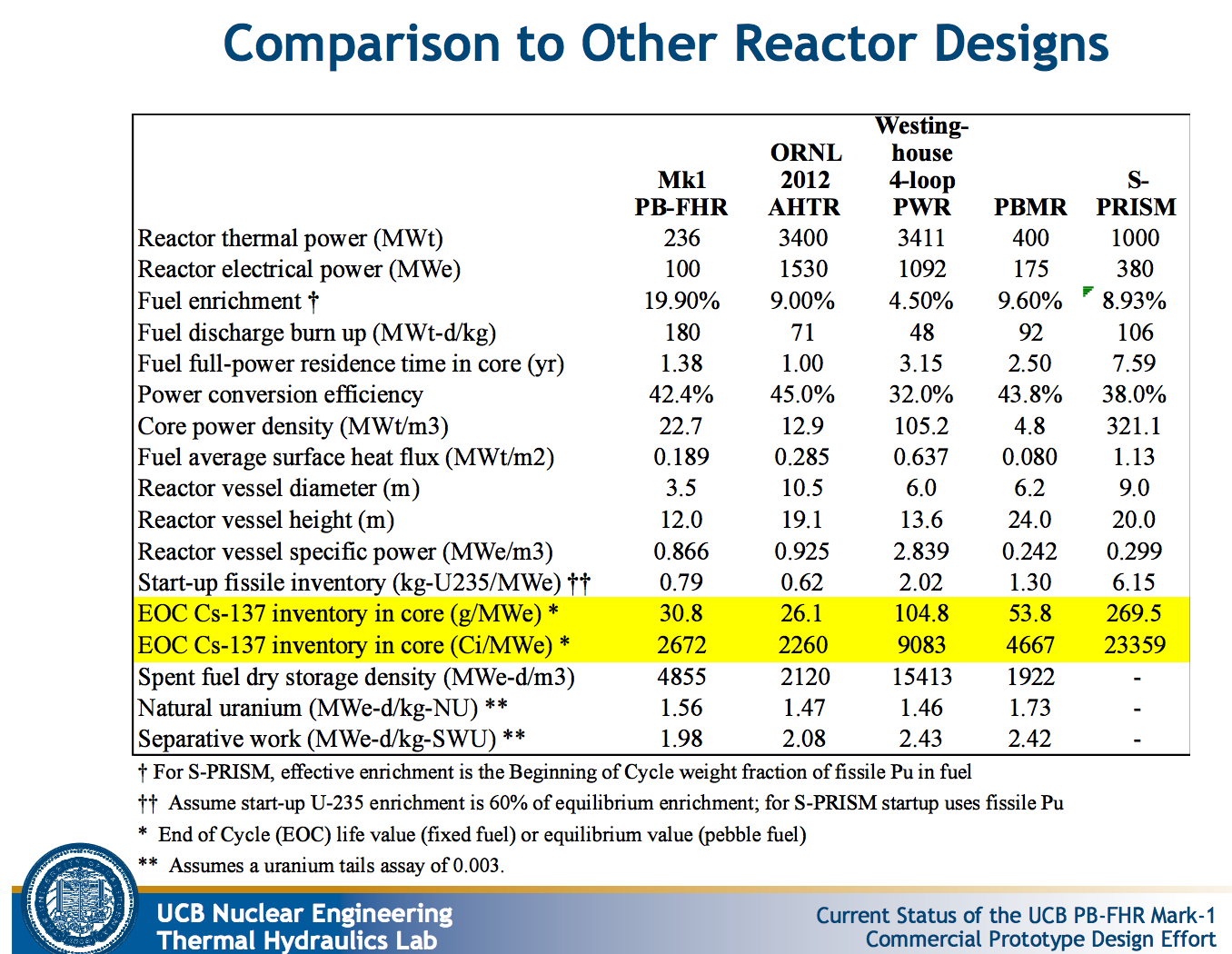The Chinese Academy of Sciences (CAS) has provided resources for research, technology development, design, and construction of an FHR test reactor in China. This initial test reactor will have a maximum thermal power of 10 megawatts. A second, 100-megawatt test reactor is also planned. Both FHR test reactors will use low-enrichment uranium fuel.
FHRs are an emerging class of salt-cooled reactors that feature low-pressure liquid fluoride salt cooling and solid coated particle fuel. This design provides a high-temperature power cycle that improves efficiency and a passive safety system designed to handle potential accident conditions without human intervention. FHRs have the potential to economically and reliably produce large quantities of carbon-free energy (both electrical and thermal), but technical challenges remain.
China's timeline was presented in 2013.
Berkeley and others have FHR reactor designs
There was a Jan, 2014 Current Status of the UCB PB-FHR Mark-1 Commercial Prototype Design Effort presentation
Current FHR Development Efforts
• DOE Integrated Research Project (IRP) – Collaborative university effort with MIT, UCB, and UW – Includes commercialization strategy, commercial prototype and test reactor pre-conceptual design effort, and assorted technology development efforts
• Oak Ridge National Laboratory – Ongoing FHR development work on technology roadmap and reactor design (plate fuel)
• ANS Standards Committee 20.1 – Currently developing FHR-specific GDCs and design standards
• Shanghai Institute of Applied Physics (SINAP) – Currently developing FHR and MSR technology – 10 MW FHR test reactor deployment planned for 2017
SOURCES - weinberg foundation, oak ridge today


